Summary
The OC Scheme is an activity theory-based description of the tasks of the school subject music. It offers answers to problems, which music teachers deal with every day. Three examples:
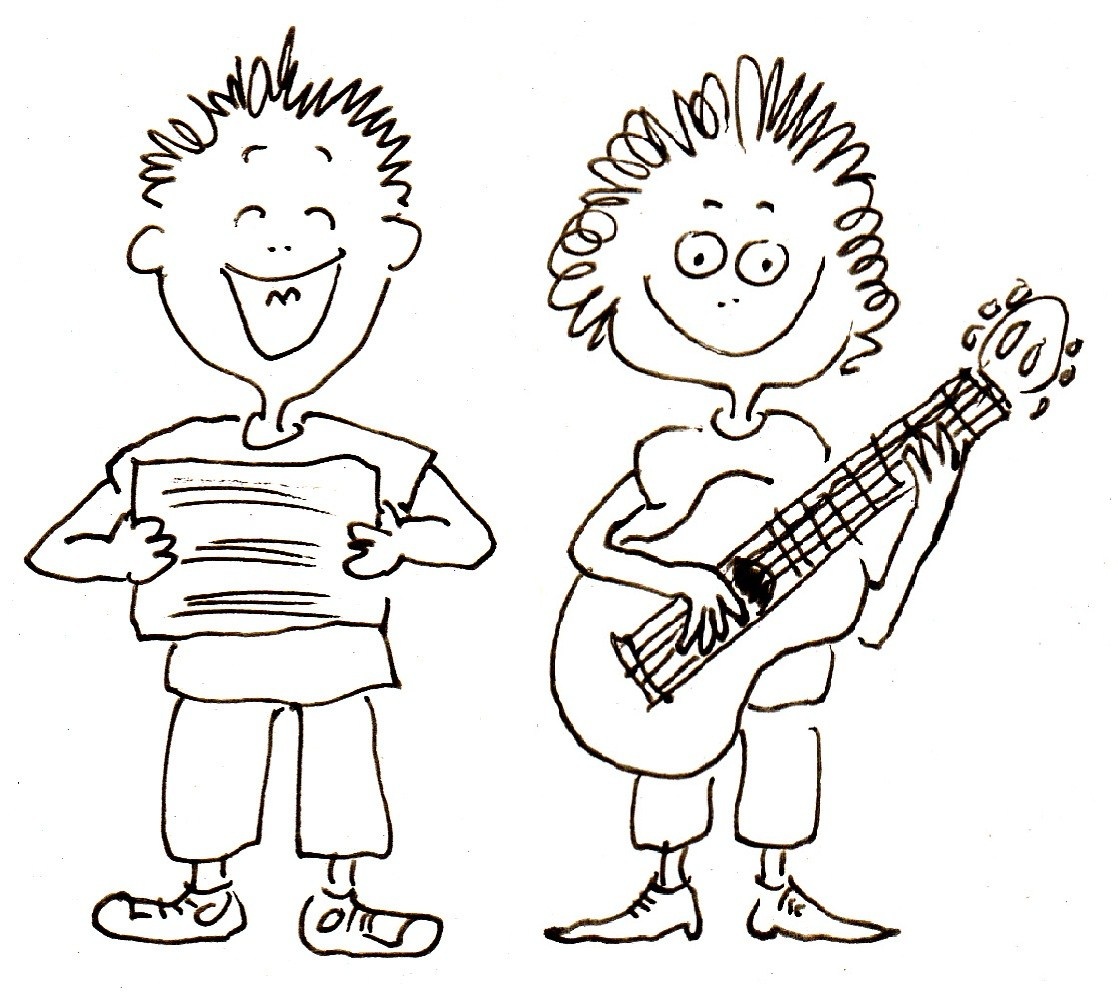
- Some students even in tenth grade are not able to read music. The OC Scheme removes the guilty conscience of students as well as of teachers.
- Some school administrations allow only in part afternoon activities such as choir, orchestra, or band as payed working hours. The OC Scheme makes a good case for optional learning in the afternoon.
- Some curricula confine themselves to enumerating the competences to be acquired and leave the choice of subjects to the music teacher. The OC Scheme offers criteria for topic decisions.
The OC Scheme is compatible with conceptions of active learning, experiential education, and democratic education, which deal mainly with the question how to teach, and it gives answers to the question what to teach.

|
Premises |
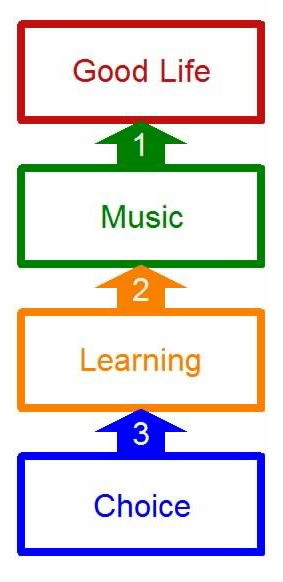
The OC Scheme starts with three premises:
-
No life without music - music enriches life.
Musical activities make a contribution to what philosophers call a "good life". -
No music without learning - music requires abilities.
To be musically active you need to acquire knowledge and skills. -
No learning without choosing - music learning requires decisions about matters.
There are so many music-related acitivities that nobody is able to perform all of them.

|
Activities |
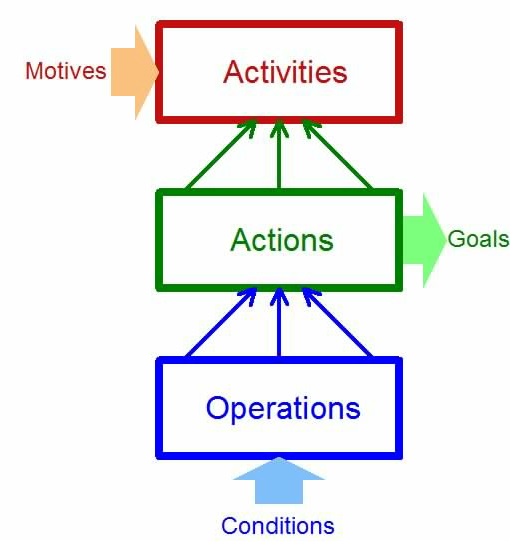
According to the activity theory of A. N. Leontjew, activities are relatively comprehensive and complex processes. Actions in contrast are limited. Activities are composed of single actions. On the other hand, every action is composed of single operations, which are largely automated routine processes.
An example:
Mr X is a hobby jazz musician (activity).
Therefore, he practices the saxophone now and then (action).
When doing so he reads notes (operation).
To understand activities, one has to ask "Why?" - ask for motives. For actions one should rather ask "What for?" - ask for goals. For operations one asks for the conditions which have led to choosing them.
One of the motives inciting Mr X to his activity is his pleasure in playing music.
By practicing the saxophone he aims at being able to play his big band pieces flawlessly.
He reads notes because he plays notated music.

|
Tasks |
Resulting from these premises, a person who wants to acquire a music education has to successfully deal with four tasks:
1. He has to become acquainted with the available musical activities.
2. He has to choose one or more musical activities.
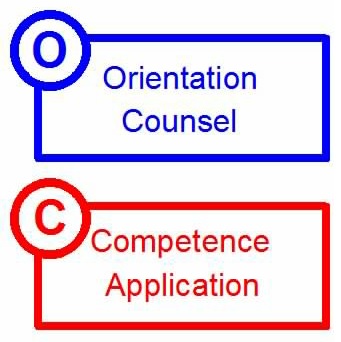
3. He has to acquire the necessary musical competences.
4. He has to use the acquired musical competences.
The resulting tasks for school are:
1. It has to acquaint learners with the diversity of musical activities.
2. It has to assist with choosing musical activities.
3. It has to support the acquisition of musical competences.
4. It has to facilitate the use of musical competences.
Orientation, Counsel, Competence and Application are the four tasks of the school subject music (OC Scheme - O for Orientation and C for Competence).

|
Goals |
Orientation can have two functions:
1. Decision guidance - it helps choosing musical activities - and
2. Experience background - it helps performing musical activities.
Concerning the acquisition of competence there are two functions as well:
1. exemplary and preliminary acquirement of musical abilties in order to try unkown activities (acquisition of competence "on approval") and
2. systematic and sustainable acquisition of musical abilities in order to perform self-chosen activities (acquisition of competence "in earnest").
Accordingly, the musical learning opportunities of school pursue the following (long-term) goals:
1. The students are to become acquainted with a representative choice of musical activities accessible to them.
2. The students are to make a well-founded choice.
3. The students are to acquire the necessary abilities.
4. The students are to perform the self-chosen acitivites.
5. The students are to develop interest in unkown musical activities.
6. The students are to become acquainted, with which alternatives to activities they are familiar.

|
Organisation |
The different tasks of musical education necessitate different forms of organisation:
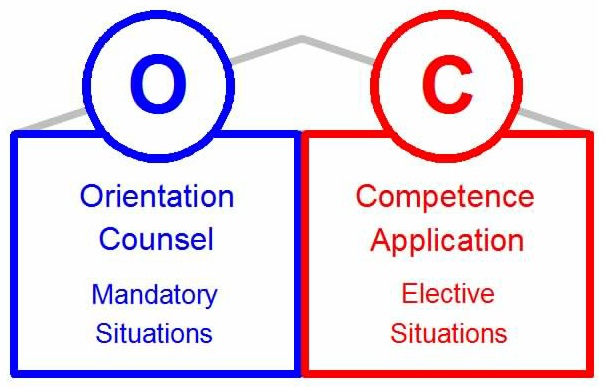
- School music lessons in a narrower sense, i. e. mandatory courses, in which the students have to participate, provide mainly orientation and counsel.
- For systematic acquisition of competence and exercise of musical activities a sufficient diversity of elective courses is required (guitar lessons, school choir, big band, dancing class).
If general education is to open access to music education for all children and adolescents, it has to fulfill all four tasks. The organisation of elective courses, however, will need cooperation between school and other educational institutions (music schools, churches, etc.).

|
Contents |
In music classes, the students deal with music-related activities, actions, and operations. Which of them they deal with depends on the classroom situation:
How obligatory is the participation in the class (mandatory, compulsory optional, elective)?
Which options do the students have (external and internal differentiation)?
On which of the four tasks - orientation, counsel, competence or application - is the main focus to be placed?
Usually, it is one of the following typical classroom situations:
1. Orientation as experience background (Oe): The students are to become acquainted with musical activities and their components, in order to broaden their musical horizon. In this case, the following criteria are to be applied:
Exemplarity: The teaching content should be representative for a larger unacquainted area of subjects, so as to allow the students with the help of typical examples to gradually become acquainted with the entire spectrum of the musical activities of the world. After the guitar, for example, the students should become acquainted with wind or percussion instruments instead of more plucked instruments.
Relevance: The teaching content should be momentous for the students. As an example of plucked instruments the students should become acquainted with the guitar instead of the lute.
2. Orientation as decision guidance (Od): The students should become acquainted with musical activities and their components, in order to be able to make their choice. In this situation, the following criteria are to be applied:
Accessibility: The selected music-related activities should be accessible to the students - both materially (costs, local possibilities etc.) and concerning the existing abilities and motivations. There should be, for example, guitar courses instead of harp lessons.
Holistic approach: The focus should be placed on the activities as a whole. The activities should be viewd, so to speak, from a wide-angle perspective. Making acquainted with the range of applications of the guitar, for example, would be better than explaining the tuning of guitar strings, for example.
3. Acquisition of competence in an elective course (Ce): The students should acquire such abilities as are necessary for the activities they have chosen. In this situation, the following criteria are to be applied:
Accessibility (as in the case of orientation as decision guidance - see above)
Polyvalence: The conveyed abilities should be polyvalent, i. e. they should contribute to more than one action or activity. In guitar classes, for example, it would be better to teach chords than melody playing.
4. Acquisition of competence in a mandatory course (Cm): The students should acquire such abilities as are necessary for the activities they will possibly perform in the future. In this situation, the following criteria are to be applied:
Accessibility (as in the case of orientation as decision guidance - see above)
Suspendibility: The conveyed abilities should be competences, which can only be acquired up to a certain age ("time-frame-competences"). In primary school, for example, much time should be dedicated to singing, dancing, and rhythm-training instead of courses in reading music.
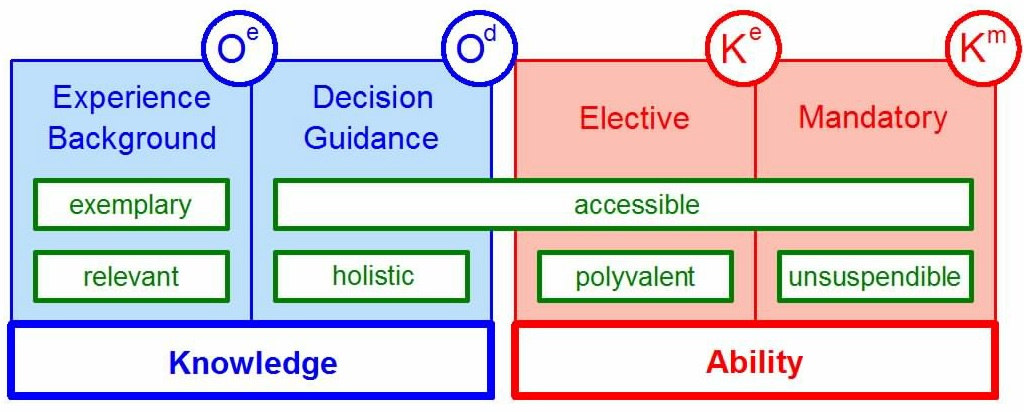

|
Methods |
The principle holds that the music teacher is to give the students opportunity to act, encourage them to reflect their experiences, and grant them as much freedom as possible for their own decisions. Therefore, all methods are suitable, which can be described as activity-, experience-, and student-oriented.
Depending on the classroom situation certain methodic strategies are particularly important:
1. Orientation as experience background (Oe): Making students acquainted with the diversity of musical activities sometimes causes motivational problems. Students are not always ready to try an activity, and to some kinds of music ("unpopular" music) they react with rejection. In this case, great efforts are required to persuade the students to deal with such music. Two strategies have proved themselves:
Accustoming: One sees to it that the students encounter "unpopular" music repeatedly, until with increasing familiarity the willingness grows to deal with it. An example for this strategy is the "minute of listening": At the beginning of every lesson the class is exposed to a short music example (as different as possible concerning instrumentation, genre, and cultural origin). Sole task: Listening without talking. This ritual can facilitate a gradual familiarisation with cultural diversity.
Intriguing: One puts the "unpopular" music in a functional context, which is momentous for the students and makes them turn their interest to the music. An example of this strategy is the "counterfeit composition": The students reproduce the genesis of an "unpopular" piece of music by producing a composition of their own allowing for the same rules the "unpopular" composer has observed (suitable are short sections and narrow specifications). Dealing with the problem, with which the composer of the original was confronted, will arouse the students' curiosity for his solution.
2. Orientation as decision guidance (Od): If the students are to be enabled to decide in favour of or against a musical activity, they have to get a realistic picture of how it is to perform this activity. Therefore, in this classroom situation two methodical principles are of particular importance:
Trying: One allows the students to act on a trial basis. One can, for example, allow them to try an instrument, in order to facilitate their decision in favour of or against learning an instrument, or one attends a concert together with them, so that they become acquainted with the activity of a concert-goer.
Meeting: One lets the students observe acting persons. One can, for example, visit an instrument-maker in his workshop together with them or invite a composer to one's classroom and let him talk about his activity.
3. Acquisition of competence in elective courses (Ce): If students are to be supported in acquiring self-chosen activites, they have to learn above all to act autonomously. Here the methodical procedure of acitivity-oriented instruction is suitable:
Auturgy: One lets the students perform the actions they are to learn as autonomously as possible. Singing in a choir is learnt by singing in a choir, playing guitar by playing guitar, and organising concerts by organising concerts.
Project work: One sets a goal, which is momentous for all participants, and lets the students try to attain it by task-sharing cooperation. One organises, for example, a big band performance, develops a self-made musical, or produces a self-made video clip.
4. Acquisition of competence in mandatory courses (Cm): If students are to acquire the "time-frame-competences" singing and rhythm without having the opportunity to decide in favor of or against them, the following methods are suitable:
Game: Since the insight and motivation of the students necessary for singing and rhythm exercises cannot be presupposed, the matters have to be presented in a playful form. Demure phonation exercises, for example, are less suited than phonation training wrapped in funny stories.
Natural differentiation: Since mandatory classes are always heterogeneous, it is not suitable to let all students learn "in lockstep". On the other hand, a systematic individualisation in the subject music is mostly unachievable. The solution is offering the students complex learning matters which allow different activities to which the students assigning themselves as autonomously as possible. If one lets the students, for example, invent individual rhythm patterns for a common body percussion arrangement, everyone can solve this task according to his individual level of ability.
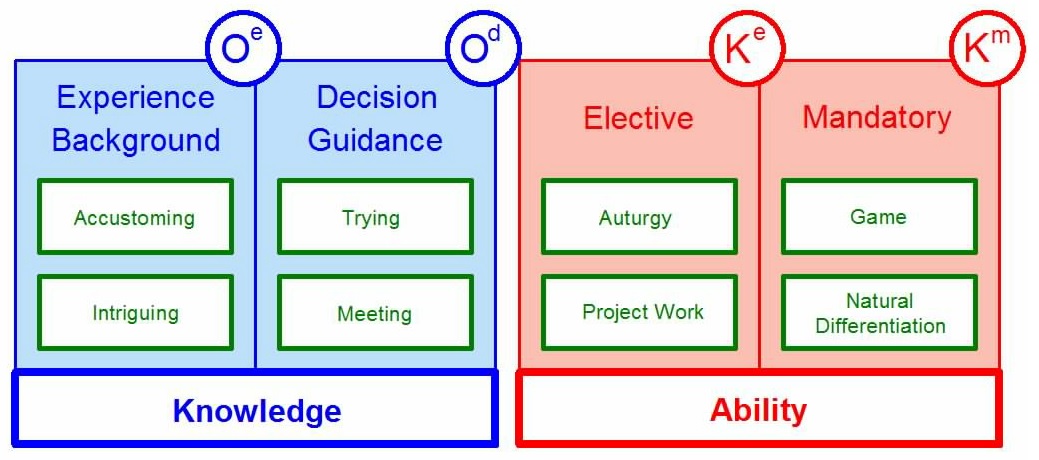
|
|

|
Evaluation |
The evaluation of processes of musical learning supported by school can have two functions: On the one hand, it can inform teachers about how successful their music- related educational work is, and it can in this way contribute to its improvement. On the other hand, it can inform students about how successful their music-related learning efforts are, and in doing so contribute to their intensification.
Music-related eductional work and learning efforts are successful, if one can make the following statements about the students:
- They are more than previously ready to deal with musical activities, with which they are not at all or little acquainted, and they are more than previously able to enjoy the diversity of musical activities.
- They have experienced musical activities, which were new and are available for them, and they have a better overview of the opportunities available to them than previously.
- They have experienced musical activities, which were new and are out of question for them, and they have a broader experience background than previously.
- They have made new decisions in favor of or against the acquisition of musical activities, and they are more able to justify these decisions than previously.
- They have acquired new abilities for self-chosen musical activities, and they are more proficient in these abilities than previously.
- They perform more self-chosen musical activities, and they perform them in a more competent way than previously.
These six criteria are to be observed as well when a student's performance in the subject music are to be assessed by the teacher. How these criteria are to be weighted, depends on the specific learning opportunity (lesson, course, ensemble, etc.), to which the evaluation refers. Whether to match the performance with a criterial, a social or an individual standard, depends on the educational or social function of the evaluation.
Because of the diversity and complexity of the criteria to be observed when evaluating the students' performance, and especially because of the variety of choices made by the different members of a class, a verbal report is more meaningful than a mere mark. More suitable are forms of evaluation such as portfolio, learning journal, etc.